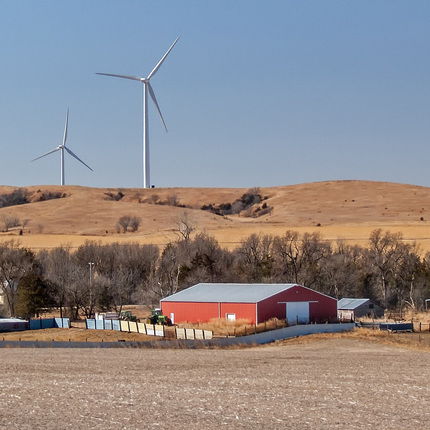Two bills proposed in the North Dakota house and senate would drastically change the benefits that North Dakotans would see from local wind energy development.
North Dakota is 11th in the U.S. for wind energy capacity, with wind energy accounting for over 20 percent of in-state electric generation in October 2016. To put it into perspective, that’s enough to power 597,000 homes, and the state could go on to develop enough wind energy to power 1.6 million average American homes.
But it isn’t just cheap and renewable power that wind development can bring to North Dakotans. Wind farms also provide benefits to local communities in the form of direct payments to landowners, with wind energy projects providing $5 to $10 million annually to landowners in North Dakota. Additionally, wind development can boost economic activity as some materials are purchased locally, and new jobs come into rural communities during construction and operation.
New tax revenue also flows from turbines. This revenue is often used by local communities to fund essential services like schools, fire departments and law enforcement; allowing an entire community or county to reap the rewards of development.
Senate Bill 2209, which was introduced this January, aimed to take 70 percent of revenue from wind projects and place it in the state general fund. This bill would mark a significant departure from the way this tax revenue is currently collected, a move from local governments receiving all of the revenue to the majority of it going to the state.
House Bill 1372 would levy new taxes on wind farms, with the majority of this new revenue going to the state general fund as well, rather than to the local communities that host turbines. These new taxes would potentially pass on costs to consumers, including electric cooperative customers, as wind farm operators would have to pay higher taxes for generating renewable power in the state.
North Dakota has huge potential to generate renewable energy for itself and its neighbors. But beyond capturing that potential, it’s essential to consider other benefits that this new development can deliver to local rural communities. Keeping revenue from these projects locally boosts services in communities and counties. And, savings from using clean and renewable energy are ultimately passed on to small businesses and homeowners in rural communities.
Policy





